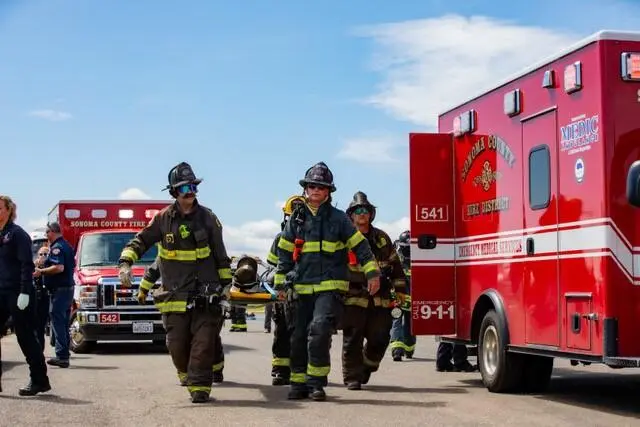Embarking on your journey as an EMT is exciting, challenging, and full of responsibility. One of the most important tools in your training and future career is your emergency medical kit. But it’s not just about having the right equipment; it’s about knowing how to use it, organize it, and maintain it so you’re ready for anything that comes your way.
Here’s your ultimate guide to building a reliable EMT kit from the ground up.
Image Credit: Press Democrat, “Sonoma County Airport Fire District,” The Press Democrat, accessed April 2025. Photo courtesy of The Press Democrat.
1. Know Your Kit Inside and Out
Start with the basics. Your kit should always include essentials like a quality stethoscope, and a blood pressure cuff. But knowing what’s in your bag isn’t enough you need to understand what each item does and how to use it under pressure. That confidence can make all the difference in an emergency.
2. Invest in Durable Gear
You’ll be using your tools often and in unpredictable environments. Look for high quality, durable materials think stainless steel instruments and water-resistant bags. Reliable gear ensures you’re never let down when it matters most.
3. Organize for Speed
In emergencies, every second counts. Use compartments, clear labels, and a consistent layout to make your kit easy to navigate. Practice using your kit regularly so you always know exactly where everything is even in the dark, even under stress.
4. Keep It Updated
Medical supplies expire or get used. Set a regular schedule (monthly or quarterly) to check your inventory, toss expired items, and restock what’s missing. A simple checklist can help you stay on top of it.
5. Include Specialized Tools
Depending on your region and role, you may need additional tools like a bag valve mask (BVM), pocket mask, or tourniquet. Learn when and how to use these life-saving tools so they’re second nature in the field.
6. Balance Load and Function
You want to be prepared but also mobile. Avoid overpacking. Choose versatile, multipurpose tools where possible, and tailor your kit to the types of emergencies you’re most likely to encounter.
7. Follow Local Protocols
Every area has different EMS standards and regulations. Make sure your kit complies with local protocols and reflects the most common types of calls in your area. Attend local trainings and stay connected with other EMTs in your region for extra insight.
8. Plan for the Environment
Environmental conditions can impact your gear. Use insulated containers or waterproof bags to protect your equipment from heat, cold, or moisture. Choose materials that can withstand the conditions you’ll be working in.
9. Practice, Practice, Practice
Drills and simulations aren’t just for class they’re essential for real world readiness. Run scenarios using your actual kit. Mix it up between urban and remote settings to build flexibility and confidence.
10. Keep Learning and Adapting
Emergency medicine is constantly evolving. Stay current with new tools, techniques, and best practices. Attend workshops, read industry publications, and stay engaged with the EMT community. Your commitment to growth makes you a stronger, more prepared responder.
Final Thoughts
Building and maintaining your EMT kit is a continuous process but one that will set the foundation for your effectiveness in the field. From understanding your gear to staying sharp with regular practice, preparation is key.
🚨 Ready to Take the Next Step?
Want more EMT tips, gear recommendations, and hands-on guides like this? Check out our website MedTechKits.com to get started building your perfect setup today!
Your future patients are counting on you start preparing like a pro now.

